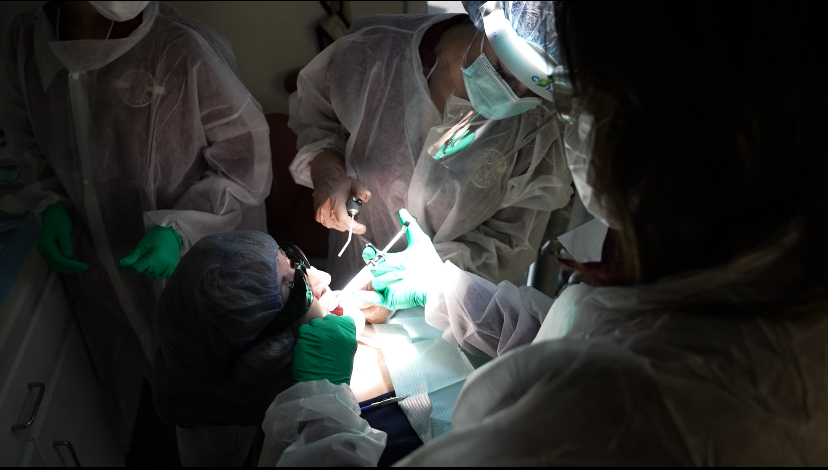Latest Blog Articles

Dental Implant Problems And What You Should Know
“Industry statistics are useful, but the most important thing to consider is the information you gather about the dentist who will be performing your procedure.” - Tom Gonzales

Introduction:
Dental implants have revolutionized tooth replacement. What used to be a constant battle with an ailing tooth is now being replaced with a permanent solution that is natural-looking and durable. However, even with the promise of a beautiful, permanent smile, there is a small percentage of patients who still experience pain, discomfort, lack of functionality or poor aesthetics.
With that said, here are 4 of the most common questions asked about dental implant problems. There's also a deep dive into how choosing a qualified, skilled dentist can prevent problems and ensure the long-term success of your dental implant solution.
1. What is the most common problem with dental implants?
One of the most common problems with dental implants is peri-implantitis, or inflammation of tissue around the implant that can lead to implant failure. This condition is often caused by poor oral hygiene or by placing too much stress on the implant. For example, if a patient fails to brush and floss regularly around the implant site, bacteria can build up and cause infection, leading to peri-implantitis. Remember, while the implant and tooth are not “live” components in your mouth, the bone and soft-tissue around them still have a blood supply and nerves, so they’re subject to decay.
Brushing and flossing is something you can control to prevent decay, but when inflammation results from how and where exactly the implant was placed, that’s something an experienced dentist could have prevented. Additional treatments or even the removal of the implant is the cost you may have to pay for not preventing or not treating peri-implantitis, and the cost can be significant. To avoid this, spend the time and effort necessary to choose a surgeon with a verifiable track record for results.
2. Can you see the screw after a dental implant?
A concern for some patients is whether the screw used to attach the implant will be visible. This is a valid concern, as a visible screw can detract from the natural appearance of the implant and tooth. While it is possible to start seeing this once the soft tissue surrounding the surgical site has healed, most people won’t see evidence of a screw until months or even a few years later.
This is usually a sign that the implant was placed too close to the outer surface of the bone, or there wasn’t enough soft-tissue to insulate and protect the bone. This also tends to be more common in the “aesthetic zone” or front, visible teeth, rather than with molars where there is more bone to work with.
The good news is a skilled surgeon can ensure that the screw remains hidden by placing it deep enough into the jawbone and/or applying gum-grafts, without compromising the integrity of the bone, soft-tissue and functionality. This careful attention to detail during surgery ensures that the implant looks natural and blends seamlessly with the rest of your teeth.
3. What is the failure rate of implants?
Most reports suggest that implant failure is rare, with a success rate of around 95-98%. While this is an encouraging statistic, it’s important to consider that high success rates for implants may not accurately reflect real-life success rates. There are many reasons for this.
First, many studies do not always include private practices that deal with a wide range of cases. Other studies include only ideal candidates for implants or cases where the clinicians who run the trials are experts. Another reason is that the number of implants being placed each year is not tracked, which makes it difficult to calculate a reliable success rate. And finally, injuries and issues in real-life cases are often under- reported or not disclosed until months or years later, and unfortunately these instances are not reflected in the current statistics.
Industry statistics are useful, but the most important thing to consider is the information you gather about the dentist who will be performing your procedure. The cost of implant failure can be high, both financially and in terms of the impact on the patient's oral health and quality of life. Patients who choose a skilled surgeon can expect a higher success rate for their dental implants, giving them confidence in their smile for years to come.
4. Can an implant be re-done if it fails?
In the rare event that an implant fails, it can usually be removed and replaced with a new implant. This may be corrected by the same dentist who originally placed the implant. If the dentist is no longer practicing or if the patient had to travel a great distance to have work done, this could be a challenge. From another perspective, a patient may be reluctant to have the same dentist perform the restoration if it wasn’t done to a higher standard the first time.
While it’s possible to find the right dentist, don’t be surprised if in your search, many are unwilling to perform the restoration and turn your case down. You see, these cases tend to be much more complex than the original case. The dentist’s skills may not be sufficiently advanced, or even with advanced skills some dentists default to avoiding such restorations because of legal risks. One possible rationale behind fixing another dentist's work is that once he or she performs the restoration, they own anything and everything that was done by the previous dentist.
This is why choosing a skilled surgeon with a successful track record from the start can prevent implant failure and the need for redoing the procedure down the road. Instead of being lured by a seemingly inexpensive price tag, dental implant candidates should do their research and consider many factors when selecting the right dentist for them.
In conclusion, a candidate’s dental implant journey should be an exciting one, celebrating the transformation that comes from finally being able to eat the foods one loves and feeling confident in a beautiful new smile. But it’s a journey that you should begin by being informed. While problems during the journey or with the result are mostly uncommon, you can take measures to qualify the dentist who is doing the work. With certain cases, that might involve qualifying more than one dentist involved in different aspects of your treatment. The time spent doing some good research can save thousands of dollars in the long term as well as help avoid the cost of time, effort and the disappointment of a dream unachieved.

